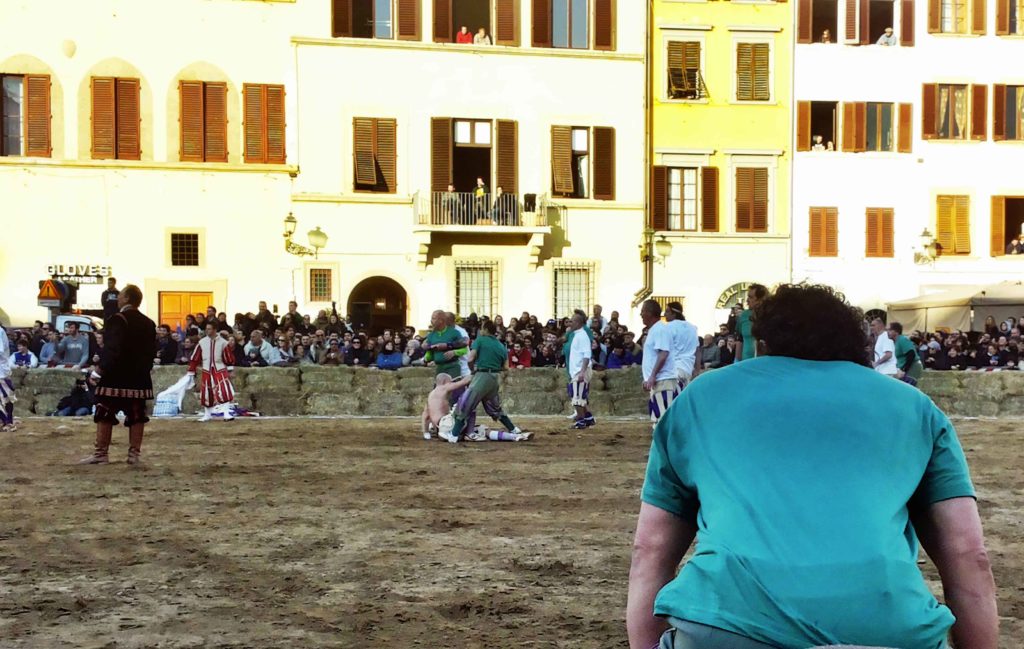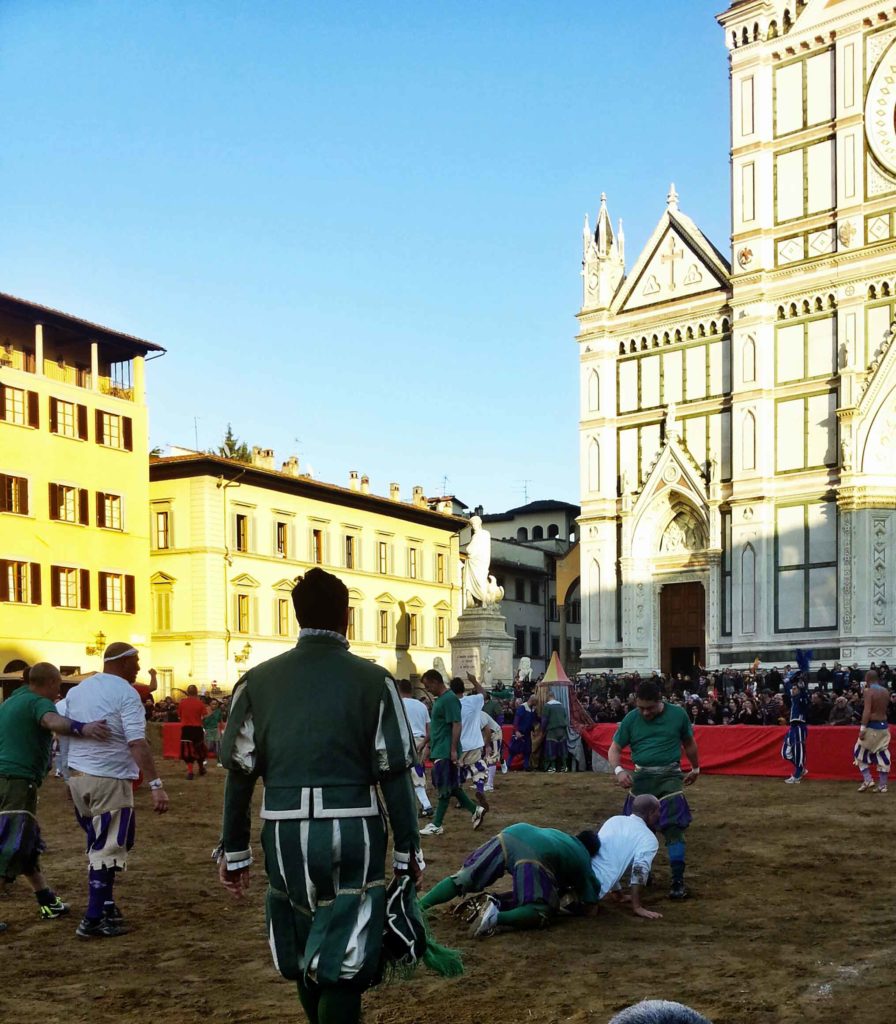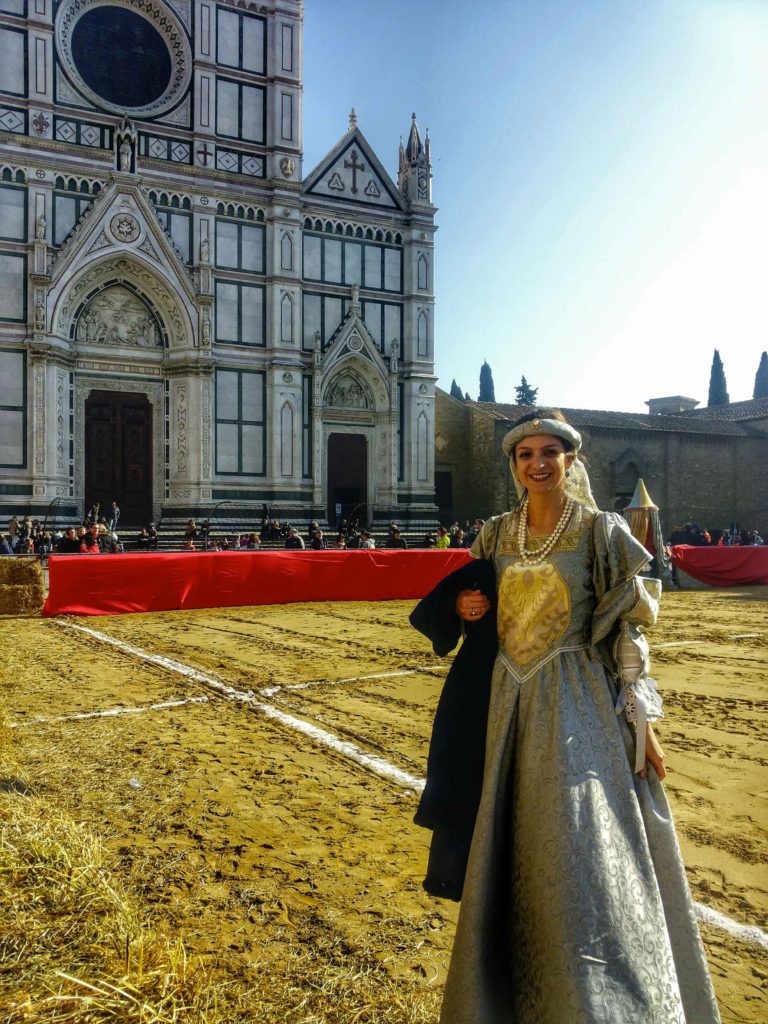Historic football Florence: everything you must know
The historic football of Florence or florentine football – calcio storico – is much more known for its violence than its roots, but there’s much more behind the fights. It’s not just a sport. It’s an ancient tradition that survived through the centuries, still representing the pride and the history of Florence, and still loved by locals.
historic football of Florence: how it works
It’s a kind of a mix between soccer, rugby, wrestling and street fighting. The four teams are identified by color and are representing the four historical neighborhoods of Florence: Santo Spirito (White), Santa Croce (Blue), Santa Maria Novella (Red) and San Giovanni (Green). The game is played every year in june, with the 2 semi-finals in the second or third weekend, and the final on the 24th of june. The final takes place on Saint John the Baptist day, the patron saint of Florence. Each team is made of 27 players wearing the tytipcal costumes of Renaissance. One referee and six linesmen are in charge of controlling the gamefield.
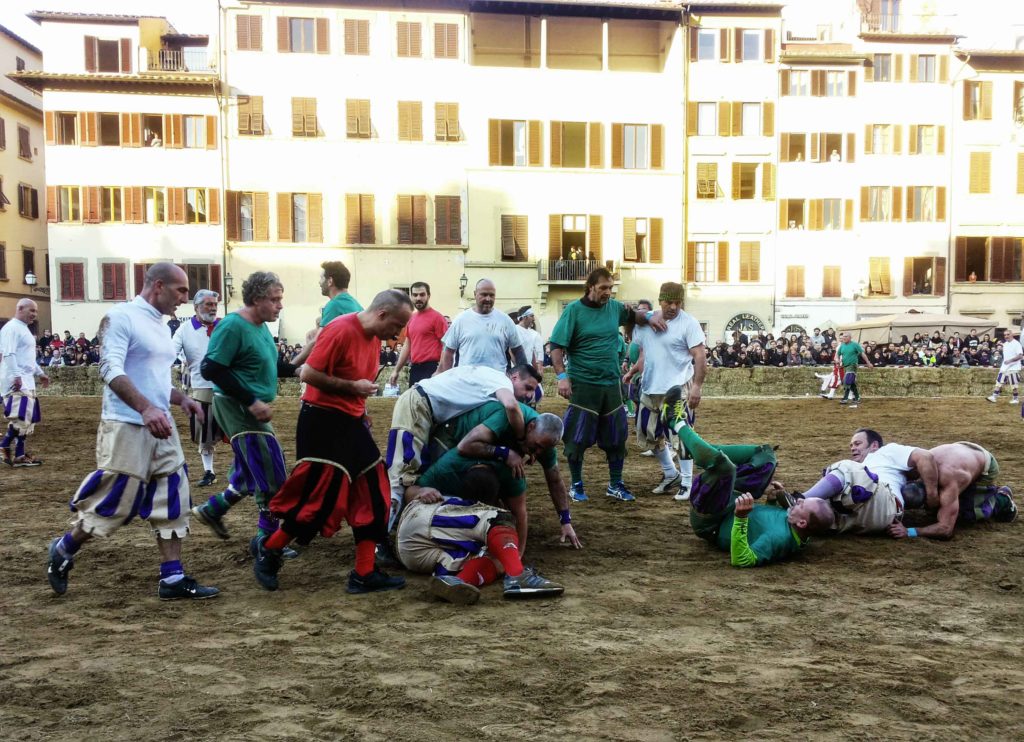
The rules
There are only a few rules to follow. Each team tries to score a goal (caccia) throwing the ball in the opponent’s net, the ball is passed with both hands and feet. Fights and rucks are common ways to stop opponent players. Each caccia counts 1 point, but a failed caccia will give half a point to the opponent team. When a player is injured or expelled no substitution is provided.
Take a look at the video I shoot last year to get an idea!
The origins of historical football
Historical soccer is rooted in ancient Rome, where a very similar game (called harpastum) was played by legionaries in order to keep them trained and ready for the next battle. After the fall of the Roman Empire the game was never forgotten in Florence, and people kept on playing it throughout the middle-ages. During the Renaissance this sport was so popular that even Lorenzo the Magnificent used to play it.
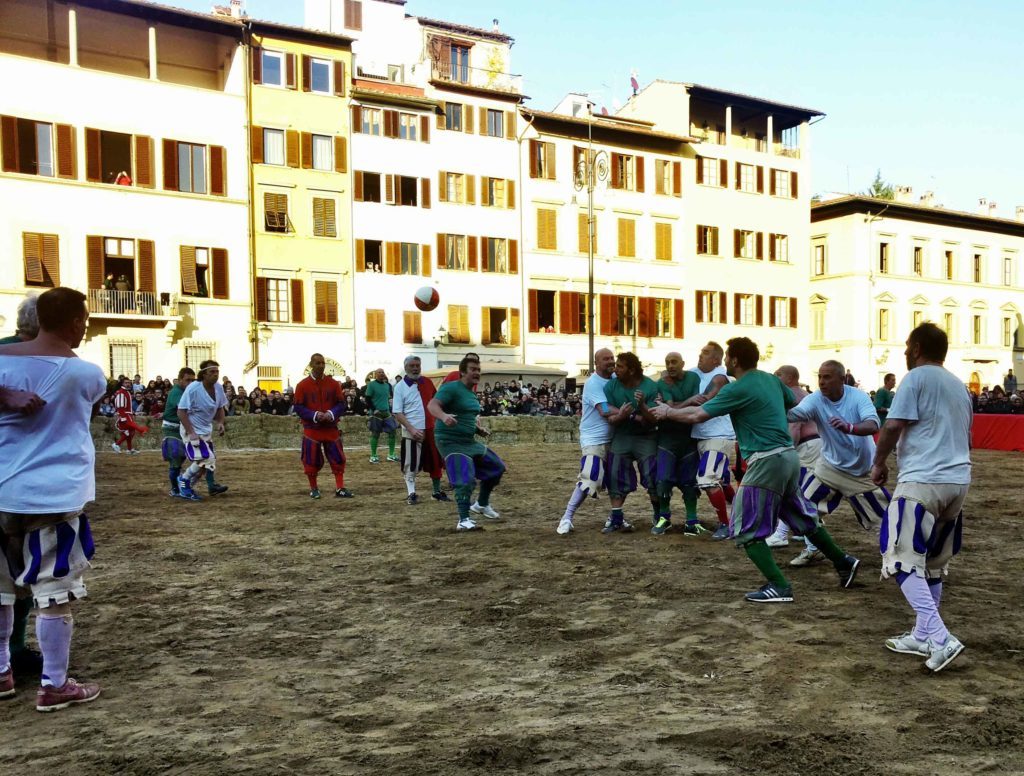
The match of 1530
The present historic football tournament commemorates the famous match that was played in 1530, in defiance of the imperial troops of Charles V, as Florence was under siege. All the present costumes remained true tho those ones that were commonly worn in the 1500.
The historic parade and flag throwers
The official historic parade of the Republic of Florence usually anticipates the matches. Every single person in the parade is representing a specific role of the Republic of Florence of 1530. Just after the parade there is usually a flag throwing show performed by the city team, Bandierai degli Uffizi, one of the best groups in Italy.
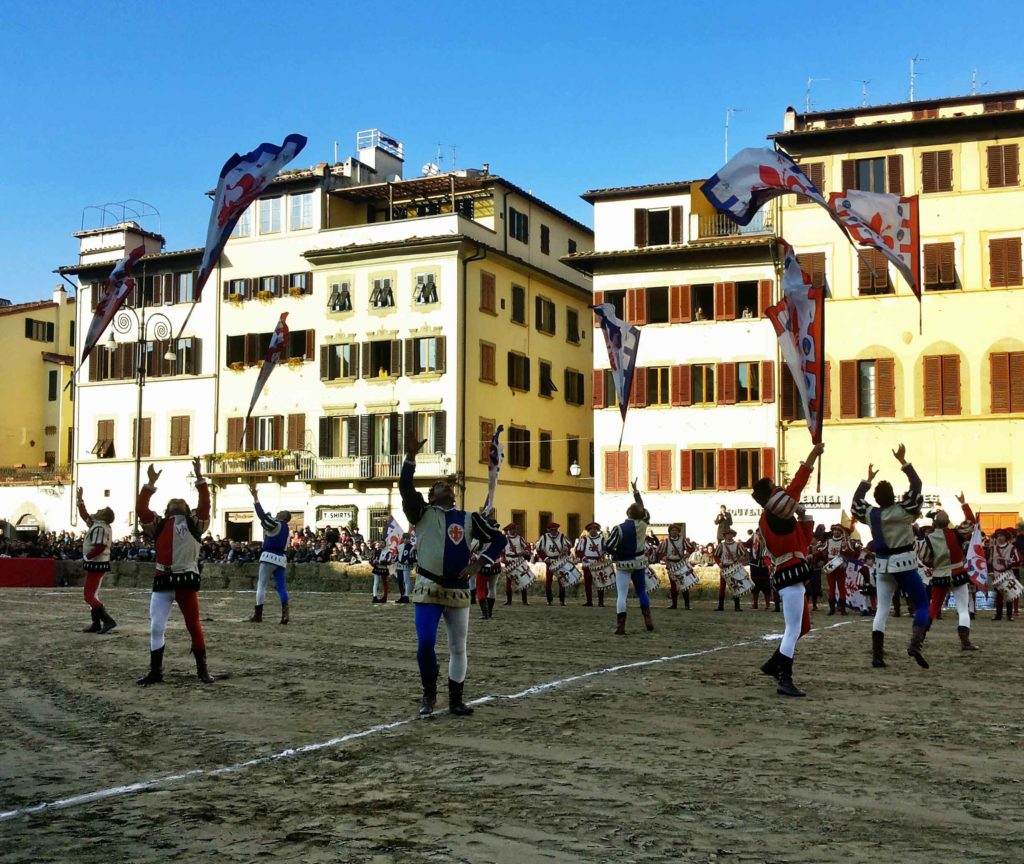
The prize
For the match of 1530 the prize was a calf of chianina: a very desirable reward during a siege, when the city was literally starving. Today a calf simbolically walks among the historical parade but won’t be butchered. The only prize for the winners will be a nice dinner (with bistecca alla fiorentina, of course): the players are not paid for their efforts and won’t get any other prize or money.
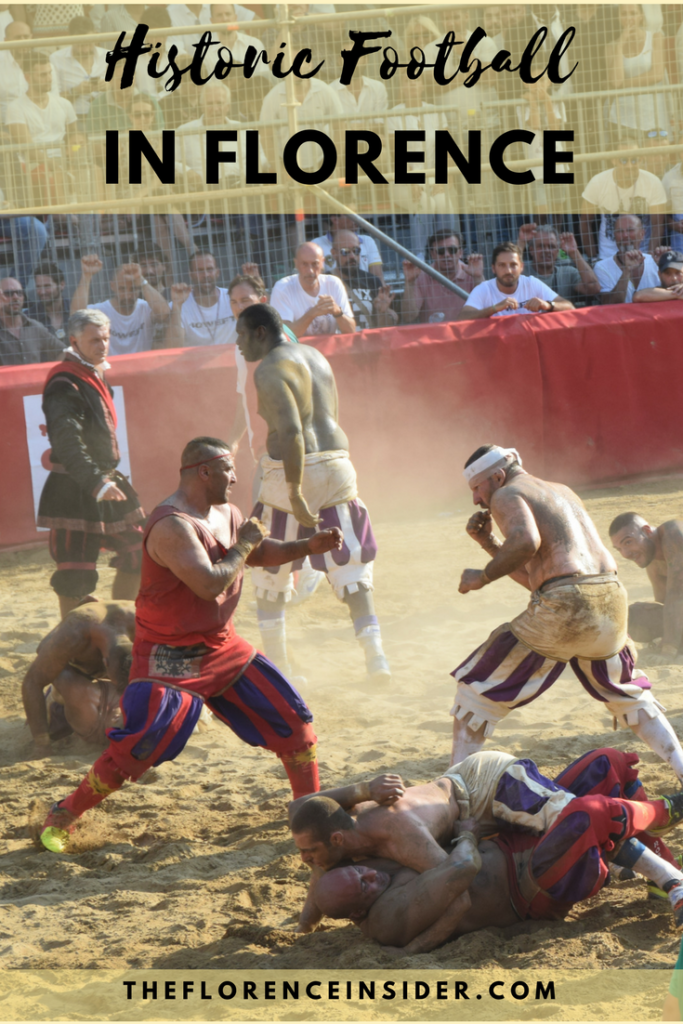
The draw
The teams that will have to face each other in the semi-finals are selected with a draw on Easter morning. In piazza Duomo, just in front of the Cathedral, the bishop will draw by lot the teams, and then a blessing for the player is followed.
The field of historical football in Florence
Piazza Santa Croce, with its wonderful medieval church, is the field for the game. In june the stone-made ground is covered with sand and framed by bleachers, and that’s the field. I think this is the most beautiful sport field in the world!
Movies and tv shows to learn more about historical soccer:
I suggest you to watch Florence Fight Club, a beautiful documentary that has been filmed a few yars ago in Florence. It features interviews with the players and their families, and shows the trainings and the preparation of the matches.
Need some help planning your travel?
